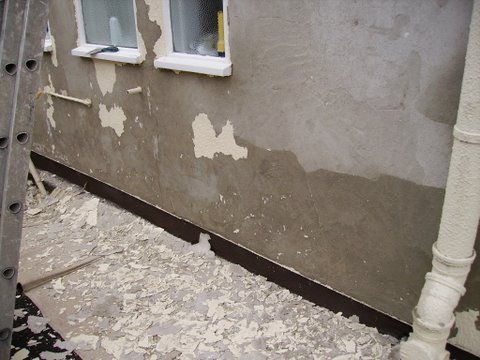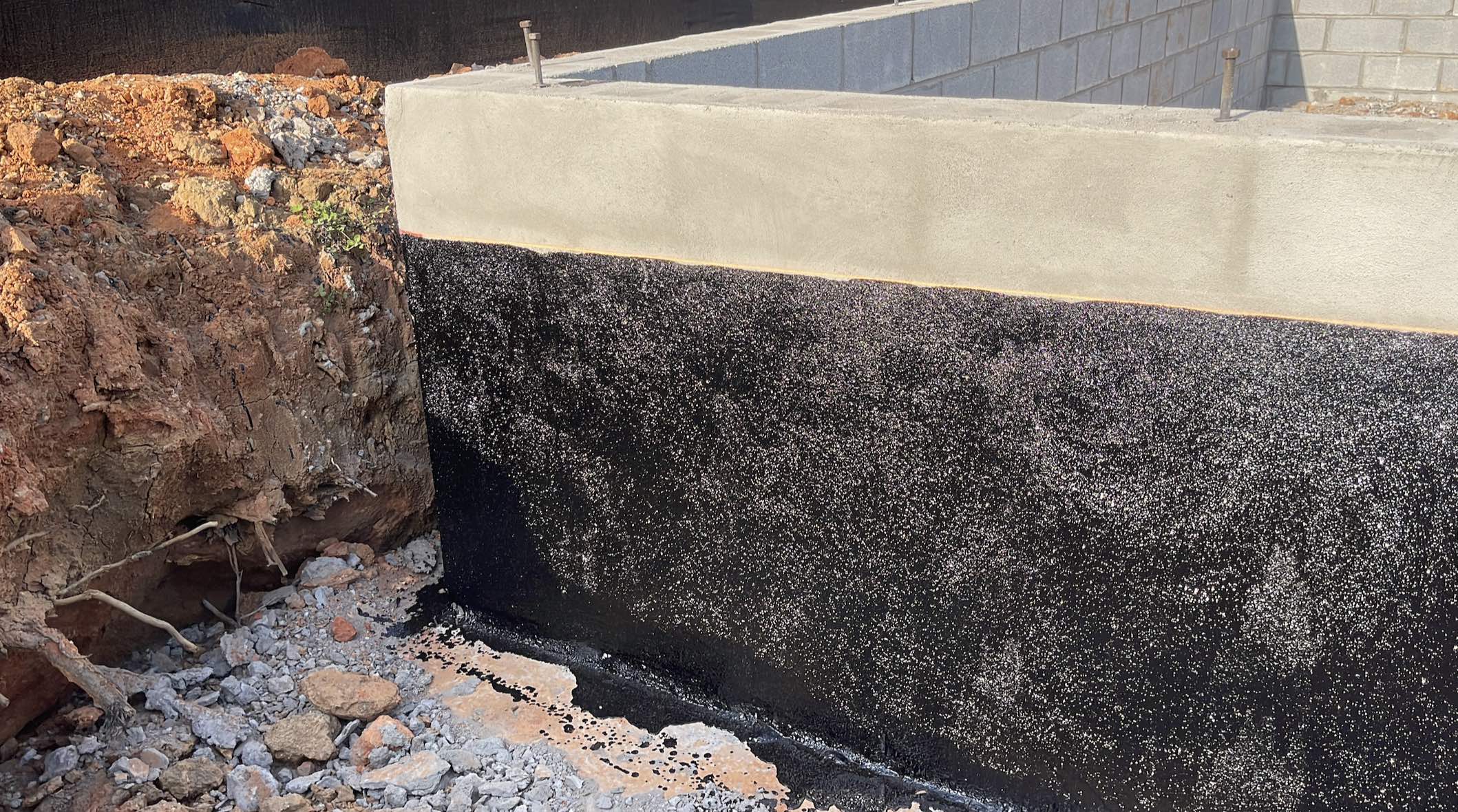Understanding the Relevance of Damp Proofing in Preventing Structural Damages
Damp proofing functions as a crucial defense versus moisture infiltration in structures. This protective procedure can prevent substantial architectural damage, yet many residential property owners stay uninformed of its significance. Identifying the indications of dampness and recognizing the numerous remedies available can be critical. Neglecting damp proofing can lead to serious consequences. What are the details threats and options that homeowner should think about?
What Perspires Proofing and Just How Does It Function?
Moist proofing functions as an essential barrier against dampness intrusion in buildings. damp removal newcastle. This procedure includes applying certain products and techniques to avoid water from permeating wall surfaces, floors, and other architectural aspects. Commonly, wet proofing can be achieved through the installment of damp proof membrane layers, layers, or the usage of specialized sealants.These approaches work by developing a safety layer that prevents wetness motion, guaranteeing that the indoor environment stays healthy and balanced and completely dry. Moist proofing is specifically important in locations prone to high humidity or groundwater, as it assists preserve the honesty of the framework over time.Moreover, reliable damp proofing adds to energy efficiency by preventing warmth loss connected with moist atmospheres. By resolving possible wetness concerns prior to they rise, damp proofing works as an aggressive measure in safeguarding buildings from the harmful effects of water damage, eventually prolonging their life expectancy and preserving their value
Common Indications of Moisture in a Structure
Dampness concerns within a building can materialize via a number of noticeable indications that indicate the existence of moisture. One prominent indication is the appearance of water discolorations on wall surfaces or ceilings, which often shows moisture seepage. Additionally, gurgling or peeling paint can recommend that excess humidity is caught below the surface area, causing degeneration. An additional common indication is the presence of mold and mildew, which flourish in moist problems and can frequently be identified by their stuffy smell. A surge in humidity degrees can trigger condensation on home windows and various other surfaces, highlighting wetness issues. Distorted or uneven flooring may signify underlying wetness that jeopardizes structural integrity. Identifying these signs early can help mitigate potential damages and keep a risk-free living environment. Regular inspections and punctual action are crucial in resolving moisture concerns before they intensify.
The Risks of Neglecting Damp Proofing
Overlooking wet proofing can bring about substantial threats to a building's structural stability, as dampness build-up may damage foundations and walls. Furthermore, long term moisture produces a setting conducive to mold growth, presenting severe carcinogen to residents. Resolving these risks is necessary for guaranteeing both security and durability of the residential property.
Structural Stability Threats
When property owners overlook the relevance of efficient wet proofing, they subject their properties to significant architectural honesty dangers. Prolonged dampness infiltration can lead to the advancement of mold, which deteriorates fundamental components and can endanger general stability. Additionally, excess moisture can wear down concrete and brickwork, causing cracks and architectural failures. Wood components are especially at risk; they can rot and lose load-bearing capability, positioning major risks to the structure's structure. Untreated moist conditions may attract bugs, such as termites, which further intensify structural deterioration. Eventually, disregarding wet proofing actions can lead to costly repair services and possible security hazards, highlighting the necessary duty of proactive moist management in preserving the honesty of properties.
Carcinogen Issues
Just how can a seemingly minor oversight result in serious health threats? Disregarding damp proofing can produce a setting favorable to mold and mildew growth, which poses substantial health and wellness hazards. Mold and mildew spores can cause allergic responses, breathing concerns, and other wellness complications, specifically in prone populaces such as kids, the senior, and people with pre-existing conditions. In addition, consistent moisture can attract pests like rodents and insects, which carry illness that additionally endanger health and wellness. The presence of moisture also adds to a decline in indoor air top quality, exacerbating bronchial asthma and various other respiratory ailments. The failing to attend to damp problems not only intimidates structural integrity yet likewise threatens the well-being of residents, highlighting the critical demand for efficient damp proofing actions.
Different Kinds Of Damp Proofing Solutions
Although various elements can add to damp concerns in structures, selecting the proper wet proofing service is vital for protecting structural honesty. Numerous alternatives are available, each customized to certain conditions.One common solution is a damp-proof membrane layer (DPM), commonly made of polyethylene or bitumen, which is set up in walls and floorings to stop wetness ingress. One more option is damp-proof programs (DPC), which are layers of waterproof material put within walls to block increasing damp.Chemical damp proofing entails injecting waterproofing chemicals right into walls to develop an obstacle against dampness. Additionally, external therapies such as tanking, which involves applying a waterproof layer to the exterior of foundations, can be reliable in preventing water penetration.Each solution has its benefits and is chosen based on the structure's certain concerns, environmental problems, and long-lasting maintenance considerations, guaranteeing optimal protection against damp-related damage.

The Price of Damp Damage vs. Prevention
Recognizing the financial ramifications of damp damage contrasted to prevention highlights the relevance of aggressive procedures. The costs associated with damp damage can be considerable, including repair services to architectural elements, mold and mildew removal, and prospective health-related expenses. Home owners might face significant economic pressure if comprehensive damages happens, causing enhanced insurance policy costs and lost residential or commercial property value.In comparison, buying wet proofing remedies is commonly much more economical. Preliminary costs for prevention techniques, such as installing damp-proof membrane layers or improving drainage systems, are often outweighed by the lasting savings from avoiding expensive repair work. Furthermore, stopping wet issues can improve a residential property's general worth and appeal, making it a smart investment. When assessing the cost of wet damage versus prevention, it comes to be clear that taking proactive steps can protect financial passions and preserve the honesty of the residential property with time.
Choosing the Right Damp Proofing Approach for Your Home
Which damp proofing method is most appropriate for a specific building commonly depends on numerous aspects, consisting of the structure's age, existing wetness problems, and local ecological problems. For older frameworks, standard methods such as bitumen membrane layers or cementitious layers may be extra efficient, as they can supply a durable obstacle against rising damp. In comparison, more recent buildings might benefit from modern options like injected damp-proof programs, which are less invasive and can be tailored to details moisture challenges.Additionally, residential properties in locations with high water tables or hefty rains may call for advanced techniques, such as cavity wall surface water drainage systems or exterior waterproofing. Homeowners should also take into consideration the particular materials used in their building's building, as some methods might not work. Eventually, an extensive analysis by a professional can lead homeowner in picking the most efficient moist proofing approach customized to their special conditions.
Maintaining Your Damp Proofing System Over Time
Regular maintenance of a moist proofing system is necessary for guaranteeing its lasting performance and shielding a residential or commercial property from moisture-related damages. Homeowner must conduct routine inspections to determine any type of indications of wear or compromise in the damp proofing layer. This includes checking for fractures, peeling paint, or mold growth, which may suggest dampness intrusion.Additionally, it is a good idea to tidy rain gutters and downspouts on a regular basis to prevent water build-up around the foundation. If wear and tear is observed.Engaging professional services for regular assessments can better boost the resilience of the system, reapplying membranes or sealers may be necessary. These specialists can give insights into prospective susceptabilities and recommend timely repairs.
Frequently Asked Questions
The Length Of Time Does Damp Proofing Therapy Last Before Needing Repair Work?
The durability of damp proofing therapy typically varies from 10 to three decades, depending upon factors such as the here technique made use of, ecological conditions, and maintenance methods. Routine examinations can assist establish when repair services might be essential.
Is Do It Yourself Damp Proofing Effective Compared to Professional Providers?
The effectiveness of DIY damp proofing varies substantially. mould treatment newcastle. While some people may accomplish satisfactory results, specialist services generally guarantee thorough services, leveraging expertise and high quality products to avoid future issues a lot more reliably than a lot of do it yourself efforts
Can Damp Proofing Improve Indoor Air Top Quality?
The question of whether damp proofing can boost indoor air quality develops regularly. Efficient damp proofing minimizes dampness levels, therefore minimizing mold and mildew development and irritants, ultimately adding to a healthier indoor setting for residents.
Are There Details Laws for Damp Proofing in Various Locations?
Laws for damp proofing vary by region, often influenced by neighborhood building codes and environmental problems. Compliance assurances effective moisture control, securing structures and promoting security, which highlights the necessity for adherence to these certain regulations.

What Are the Long-Term Advantages of Proper Damp Proofing?
The lasting advantages of appropriate wet proofing consist of enhanced structural honesty, minimized upkeep prices, enhanced indoor air high quality, and increased building worth. These advantages add to a healthier living setting and prolonged life-span of buildings. Usually, moist proofing can be attained via the setup of damp evidence membrane layers, finishes, or the usage of specialized sealants.These methods work by creating a protective layer that prevents moisture movement, making sure that the indoor environment remains healthy and balanced and completely dry. Wet proofing is specifically essential in areas susceptible to high moisture or groundwater, as it aids maintain the integrity of the framework over time.Moreover, efficient damp proofing adds to power efficiency by protecting against warm loss associated with damp settings. Ignoring damp proofing can lead to considerable hazards to a building's architectural honesty, as moisture build-up might damage structures and wall surfaces (damp removal newcastle). Different elements can add to damp concerns in buildings, choosing the suitable damp proofing solution is essential for protecting structural stability. Which moist proofing method is most appropriate for a details residential or commercial property typically depends on different factors, consisting of the structure's age, existing dampness issues, and local ecological problems